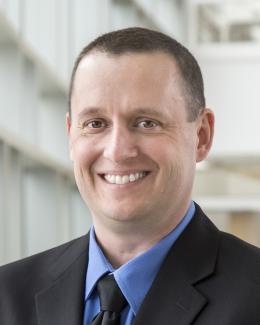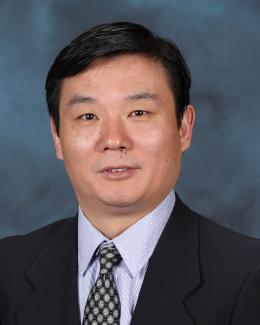OAK RIDGE, Tenn., June 7, 2016—An elusive massless particle could exist in a magnetic crystal structure, revealed by neutron and X-ray research from a team of scientists led by the Department of Energy’s Oak Ridge National Laboratory and the University of Tennessee.
In a paper published in Nature Communications, the research team studied a material containing the dense element osmium and documented two conditions required for the presence of Weyl fermions – massless particles predicted in 1929 and observed experimentally for the first time in 2015. Researchers are looking for other materials that could host the particles, with the goal of harnessing their unique properties in spintronics and advanced computing applications such as quantum computers.
“Once you have a material that hosts these particles, they can behave like electrons but travel much faster since they’re massless,” said ORNL’s Stuart Calder, first author on the team’s study. “Since all of electronics is based on the electron, if you replace electrons with these Weyl fermions, in principle you could have much faster devices.”
The scientists conducted neutron diffraction studies at the High Flux Isotope Reactor, a DOE Office of Science User Facility at ORNL, to clearly define the magnetic order of an osmium-based material with a pyrochlore crystalline structure. They discovered it has an “all-in, all-out” magnetic order—one of two requirements for this type of material to contain Weyl fermions.
“It describes the spins of electrons and how they arrange; they all either point to the center or they all point out,” Calder said. “Neutrons are the standard and the best way to determine magnetic structure. The magnetic peaks in these materials are weak because they have smaller sized spins, so you have to use an instrument like we have here to see them.”
The second criterion is strong spin-orbit coupling, a property of all atoms that describes how an electron’s spin and its motion around an atom are linked. Generally, larger atoms with more electrons exhibit a stronger spin-orbit effect. But the osmium in this material, even though it is a heavy and dense element, has an electron configuration thought to remove spin-orbit effects.
The researchers uncovered evidence of strong spin-orbit coupling in the osmate pyrochlore material using X-ray analysis at the Advanced Photon Source, a DOE Office of Science User Facility at Argonne National Laboratory.
“It’s expected that the spin-orbit coupling effect in osmium should be suppressed or ignored in this pyrochlore material,” Calder said. “But this was the first time anyone measured an osmium-based material with this X-ray technique. The point of the X-rays was to look for signatures of strong spin-orbit coupling and that’s what we saw.”
Calder cautions that the team’s research is not direct evidence of Weyl fermions in an osmate material, but it does suggest the material is a potential host.
“It shows the magnetic ground state of the material and presence of strong spin-orbit coupling that are required to have these Weyl fermions,” he said. “A lot of people are only looking at iridium-based materials for hosting the spin-orbit coupling effect that can give you new physics. This shows osmium-based materials are important too.”
The study is published as “Spin-orbit driven magnetic structure and excitation in the 5d pyrochlore Cd2Os2O7.” Coauthors are S. Calder, J. G. Vale, N. A. Bogdanov, X. Liu, C. Donnerer, M. H. Upton, D. Casa, A. H. Said, M. D. Lumsden, Z. Zhao, J.-Q. Yan, D. Mandrus, S. Nishimoto, J. van den Brink, J. P. Hill, D. F. McMorrow, and A. D. Christianson, with contributions from University College London, IFW Dresden, Brookhaven National Laboratory, Chinese Academy of Sciences, Argonne National Laboratory, Technische Universität Dresden, and University of Tennessee, Knoxville.
The research was supported by DOE’s Office of Science.
ORNL is managed by UT-Battelle for the Department of Energy's Office of Science, the single largest supporter of basic research in the physical sciences in the United States. DOE’s Office of Science is working to address some of the most pressing challenges of our time. For more information, please visit energy.gov/science.







